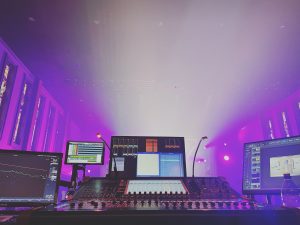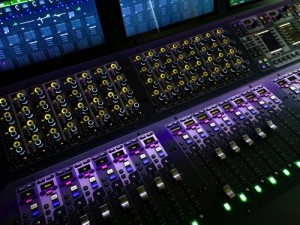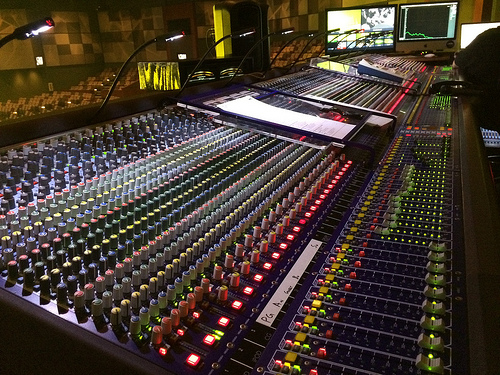
Drinking from the Firehose
I’ve been meaning to get to this for a while now. This is in response to a question I was asked in the comments to another article earlier this year:
What are your thoughts/techniques on properly placing everything in the mix, while maintaining clarity throughout.
To me, this is like the icing on the cake, after good tonal adjustments and enhancements have been made individually.
On the surface this sounds like a simple question, but I think it can actually be more complex.
Ultimately, I think placement or balance and the amount of clarity should be dictated by the music. Personally, I probably approach every mix at the start with the desire to hear everything, but not all music needs that. Sometimes it’s more important that things are just felt.
One particular example sticks out to me that Ed Cherney talked about when he was on Pensado’s Place. Ed was working with Bob Dylan, and when Dylan heard back a mix he complained that he could hear everything. Sometimes the goal is to create a vibey, textured piece and not something where everything is clear in the mix.
Since most of the folks reading this are probably mixing some sort of modern, church type music, clarity can definitely be an issue. The nature of a lot of the arrangements–or lack thereof–in these styles of music doesn’t often allow for clarity. Let’s face it, if you’ve got 4 guys on stage all playing the same chords, each instrument isn’t going to be clear. You can play with EQ a bit here and there and maybe pan things a little to get things to kind of have their own space, but there’s only so much you can do especially in live sound where most of us have to mix predominantly in a mono-esque fashion.
So I guess I believe clarity starts with the music. If there is desire amongst the musical creators to have clarity, then that means things need to be arranged to allow it. Each instrument needs to have an actual part that’s different from what the rest of the instrumentation is playing. It’s always strange to me how foreign a concept this can be for some musicians, and that’s not a new phenomenon. I can’t tell you how many “lead guitarists” I auditioned for my own band back in the day who would come in and simply play chords.
Now let’s talk about our side of this as audio folk.
One of the ways I often achieve clarity/separation is through an approach I refer to as Priority Mixing. In Priority Mixing, I basically approach the mix by starting with what I consider to be the most important element. I get it in good shape, and then I bring in the next most important thing and get it working along with the thing I brought in before it. Then I add the next most important thing and get it working with the two things before it and hopefully you can see where I’m going with this.
There are a couple thoughts behind this.
First off, most live sound engineers spend most of their time working on the stuff they bring in first, and then they run out of time for what they bring in later. For a lot of guys this means spending an inordinate amount of time on the kick drum and barely any time on the vocals. With Priority Mixing you naturally prioritize your time towards the more important stuff because you bring it in first.
The second part of this is it naturally pushes you to give important stuff more weight in the mix. Once you have something in the mix working with this approach, the idea is to leave it alone going forward. If you add something to the mix that messes up the stuff that’s already working, you hack at the new, less important thing to make it work with everything else.
Like all approaches, though, this one has some catches. For example, you need to know what matters most, and that’s not always apparent and can also change from song to song. Then in some cases, you can run into trouble by giving the stuff you bring in first too much space. So, this isn’t perfect, but I do find it to be a better place to start than the textbook approaches that get most of the attention.
If this seems like too much of a stretch or change, here’s something else to try.
Just start working with two things at a time. For example, push up a guitar with the vocals and make sure they fit together. Then maybe a guitar and another guitar and make sure they fit. Then the guitars with a keyboard. Then maybe keyboards and vocals. Bass and guitars. Strings and keyboards. Kick and bass. Etc., etc. etc.
When you’re picking your two things, try to pick things that overlap the most in the frequency spectrum. For example, I probably wouldn’t worry about how a triangle and a bass guitar sit together because they’re going to be largely on opposite ends of the frequency spectrum. But I would be concerned about how a lead guitar is sitting with a rhythm guitar; I want to make sure any melody stuff the lead guitar is doing isn’t getting wiped out by the rhythm guitar.
It’s very common for me to do this kind of thing in virtual soundcheck, but you can do it live as well during soundcheck. Plus, you don’t have to solo things to make this work. I’m not adverse to pulling lots of things back in the mix so I can mostly hear what’s going on between only a couple of other things. Just pull stuff back enough so you can focus on the things you want to focus on.
In some ways I think it comes down to this. One of the big keys to mixing just about anything but especially bigger and bigger things with loads and loads of inputs is to reduce things to smaller and smaller chunks using grouping strategies until you whittle everything down to just a handful of faders that are manageable. In my opinion, the approaches I’m talking about above fit right in with this sort of methodology. Start with small numbers and bring things in a little at a time until it’s all working together and manageable.
It can be hard to get the clarity you want in a mix when you’ve got a lot of stuff coming at you. One of the secrets to dealing with this is to not drink from the firehose. Instead, you fill up a bunch of smaller cups so you can actually drink the water.


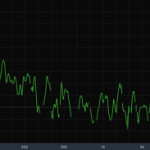 Previous Post
Previous Post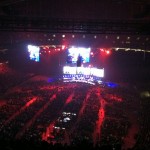 Next Post
Next Post

